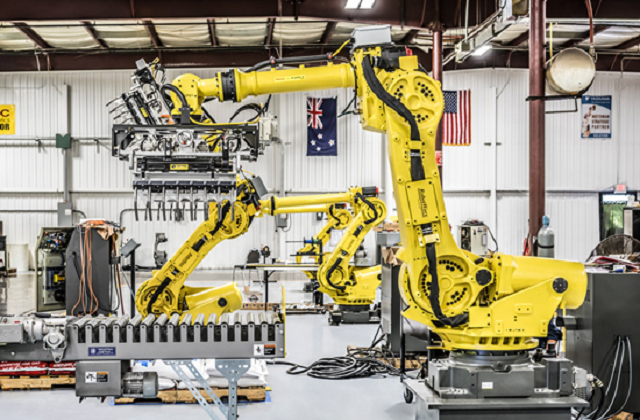Advancing Automation: Material Handling Robotics Market Analysis and Regional Perspectives
 |
| Material Handling Robotics Market |
The Material Handling Robotics Market refers to the industry
segment focused on the development, implementation, and utilization of robotic
systems and solutions for handling materials and goods across various sectors.
These robotics systems are designed to automate tasks such as picking, packing,
sorting, and transporting items, thereby enhancing efficiency, accuracy, and
productivity in material handling operations.
The material handling robotics market is estimated to be
valued at USD 24.21 Bn in 2024 and
is expected to reach USD 49.04 Bn by
2031, growing at a compound annual growth rate CAGR of 10.6% from 2024 to 2031.
Market Key
Trends:
Several key trends are shaping the Material
Handling Robotics Market. Firstly, there is a notable trend towards the
integration of artificial intelligence (AI) and machine learning algorithms in
robotic systems, enabling advanced decision-making capabilities and autonomous
operation. Secondly, the rise of collaborative robots (cobots) designed to work
alongside human operators is gaining traction, enhancing flexibility and safety
in material handling tasks. Additionally, the adoption of Internet of Things
(IoT) technologies for real-time data monitoring and predictive maintenance is
a prominent trend driving market growth.
Key Players
Key players operating in Material Handling Robotics Market
are ABB, Kuka AG, FANUC Corporation, Yaskawa Electric Corporation, Kawasaki
Heavy Industries Ltd., Universal Robots, Denso Corporation, Epson Robots,
Stäubli International AG, Omron Corporation, Nachi-Fujikoshi Corporation, Comau
S.p.A., Adept Technology, Inc, Bastian Solutions, Kanoo Machinery, ElectroMech
Industry Co, SSI SCHAEFER, Alesayi Heavy Equipment (AHE), Jugheinrich AG, and
Mitsubishi Heavy Industry Group.
Porter
Analysis:
Supplier
Power: Supplier power in the Material Handling Robotics Market
varies based on the availability of advanced robotic technologies and
components. Established suppliers with innovative solutions and strong R&D
capabilities have higher supplier power, while niche suppliers may focus on
specific segments or technologies.
Buyer
Power: Buyer power in the Material Handling Robotics Market is
influenced by factors such as demand volume, customization requirements, and
competitive pricing. Large buyers with significant material handling needs may
negotiate favorable terms, while smaller buyers may rely on standardized solutions
or seek cost-effective options.
Competitive
Rivalry: Competitive rivalry in the Material Handling Robotics
Market is intense, driven by continuous innovation, product differentiation,
and market consolidation. Key players compete based on technological
advancements, solution customization, service quality, and global reach,
leading to a dynamic and competitive market landscape.
Threat of
Substitutes: The threat of substitutes in the Material Handling Robotics
Market is relatively low, given the unique capabilities and efficiencies
offered by robotic systems in material handling operations. Alternative
solutions such as manual labor or traditional material handling equipment may
not match the speed, accuracy, and scalability of robotic solutions in certain
applications.
Threat of
New Entrants: The threat of new entrants in the Material Handling Robotics
Market is moderate to high, driven by technological advancements, lower
barriers to entry for software-based solutions, and market demand for
specialized robotics applications. New entrants may disrupt the market with
innovative offerings, partnerships, or niche market strategies, posing
challenges to established players.
Geographical
Regions:
The Material Handling Robotics Market is segmented
geographically into regions such as North America, Europe, Asia Pacific, Latin
America, and the Middle East and Africa. Each region presents unique
opportunities and challenges influenced by factors such as technological
adoption, industrial automation trends, regulatory environments, and market
demand for material handling robotics solutions.
Segment
Analysis:
The Material Handling Robotics Market can be segmented based
on various factors such as industry verticals (e.g., manufacturing, e-commerce,
healthcare), types of robotic systems (e.g., automated guided vehicles, robotic
arms, palletizing robots), and end-user applications (e.g., warehouse
automation, logistics, assembly lines). Each segment has distinct market
drivers, growth opportunities, and competitive dynamics, highlighting the
importance of segment-specific strategies and solutions in the material
handling robotics industry.



Comments
Post a Comment